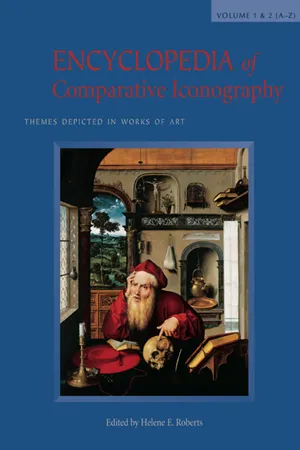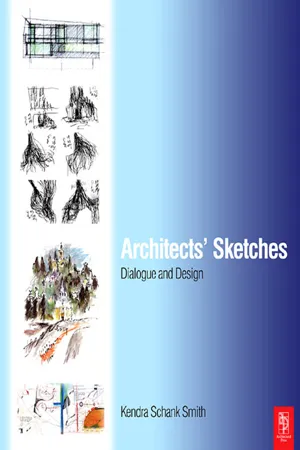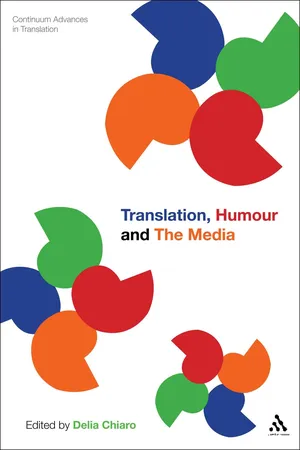Languages & Linguistics
Caricature
A caricature is a simplified or exaggerated representation of a person, typically in a visual form such as a drawing or cartoon. It often emphasizes prominent features or characteristics to create a humorous or satirical effect. In linguistics, caricature can also refer to an exaggerated or distorted representation of speech sounds or language features for comedic or illustrative purposes.
Written by Perlego with AI-assistance
Related key terms
1 of 5
4 Key excerpts on "Caricature"
- eBook - ePub
Encyclopedia of Comparative Iconography
Themes Depicted in Works of Art
- Helene E. Roberts(Author)
- 2013(Publication Date)
- Routledge(Publisher)
Caricature/Cartoon
Margaret A. SullivanDOI: 10.4324/9780203825587-21The following periods are covered in the discussion of the theme Caricature/Cartoon:- ANCIENT AND MEDIEVAL
- RENAISSANCE
- SEVENTEENTH CENTURY
- EIGHTEENTH CENTURY
- NINETEENTH CENTURY
- TWENTIETH CENTURY
Honoré Daumier, The Legislative Belly, 1834, Lithograph from L'Association Mensuelle, private collection. (Courtesy of Art Resource, New York)Claude Monet recalled that as a bored 17-year-old student he passed his time filling “the margins of my notebooks … in the most irreverent way, distorting as much as possible the faces and profiles of my teachers.” Although Monet’s fame rests on his impressionist paintings, he began his artistic career as a caricaturist, and although Caricature and the cartoon are often considered peripheral arts, outside the mainstream, they are psychologically powerful, with a long and venerable history, and both have played an important role in the development of modern art.Definitions
Caricature can be described as an opinionated, often defamatory summation of those characteristics uniquely associated with an individual or group. It employs distortion and exaggeration to create an image that deviates from the norm, either as a departure from the “normal” features of an individual, as when Monet amused himself by caricaturing his teachers, or as a violation of the physiognomic norms considered admirable in a particular society. In England in the nineteenth century, the Irish were portrayed with simian features, a Caricature that equated them with monkeys and implied that they were less than human and closer to the beasts. When a patron commissions a portrait, the results tend to reflect the values, wishes, and aspirations of the sitter. In Caricature the personal bias of the artist dominates. The motivation is to amuse or attack, the artist’s strategies include wit, humor, and, not infrequently, obscenity and scurrility, and the effect may range from the ridiculous and irreverent to the ribald and scatological. - eBook - ePub
- Kendra Schank Smith(Author)
- 2012(Publication Date)
- Routledge(Publisher)
More recently, Charles Baudelaire explored the philosophical notion of the comic and Caricature. He wrote about the nature of their methods, irony and sarcasm, understatement and extravagance, violence and insinuation, and farce and wit (Hannoosh 1992). He expressed the low and coarse in contrast to the extraordinary aesthetic importance of art. This dualism accents that laughter contains a measure of pain, reminding humans of their ‘…inferiority and mortality, of the dualism necessary to art, and thus of our potential for transcendence’ (Hannoosh, 1992). Architects, similar to artists, understand the multiple levels on which sketches convey impressions.DEFINITION OF CaricatureA Caricature expressed by transformation and deformation emphasizes a certain characteristic of a person, animal, or thing which captures or helps us understand a specific personality. The role of Caricature in revealing a truth has occasional affinity to a monster (Frascari, 1991). A Caricature stresses specific aspects of a concept, and more of the image is involved, but both Caricature and monsters recombine complex narratives or forms into new compositions; these compositions convey a new meaning. Where Caricature demonstrates and employs the new combination ‘to show’, the monster presents the future and acts as a soothsayer in the role of architecture. A Caricature, on the contrary, emphasizes deformation to disclose the true state of affairs, to ascertain the inner nature of a specific personality, or, most often, to ridicule.Caricature takes important aspects of the character to the extreme so that the character’s visual likeness is recognized. To reiterate, Caricature depends on the combination of unique characteristics and the transformation of features. The transformation of dynamic features of the likeness must rely on the ability of that counterpart to emerge from behind to be recognized. Part of the humor and understanding is conveyed through the Caricature’s resemblance to the corresponding shape: ‘[r]esemblance is a prerequisite of Caricature’ (Kris, 1934: 298).The interpretation, or understanding of a Caricature surprises the viewer by its recognition, simplicity, and its quickness. This recognition, often in the form of humor, permeates architectural sketches. They are quick in reference to play, meaning intelligent and also witty. Caricature has a strong relationship to play and, similar to qualities of quickness, the conceptual nature of architecture is revealed by architects who possess the skills of narrative, speed of mind, ability to express their thoughts, possess a sense of time, and understand the essence of economy (Calvino, 1988). Architects’ experience, humor, and imagination help them to achieve Caricature in their work. - eBook - PDF
Translation, Humour and the Media
Translation and Humour Volume 2
- Delia Chiaro(Author)
- 2010(Publication Date)
- Continuum(Publisher)
A caricatural (or ‘cartoony’) style of drawing is a characteristic of most, if not all, cartoons, and it is used in many comics and animated Humour in Translated Cartoons and Comics 35 cartoons to obtain humorous effects. This can in fact be seen as the main reason why the term cartoon is sometimes used to refer also to comics and animation. Also noticeable is that there is no mention of the use of verbal communi-cation in this denition. 1 Cartoons are rst of all a form of visual humour, and this is an important aspect to keep in mind when considering how humour is or can be translated in cartoons and comics more in general. When applied to the print media, the word cartoon usually refers to a single-panel drawing, often accompanied by a caption and/or sometimes including one or more balloons. Cartoons are usually characterized as either gag cartoons or editorial cartoons, the latter focusing on social and political concerns and often using elements of irony, satire and parody. 2 Harvey (2009) traces the origins of the present ‘gag cartoon’ back to the rst half of the nineteenth century, when the word cartoon was rst used in its modern sense on the pages of the British Punch magazine. The conven-tional format in which cartoons appeared was that of the ‘illustrated dia-logue’, with a caption containing a dialogue between two characters and a drawing depicting them. The drawing had mostly a decorative purpose, the humour springing essentially from the dialogues. The picture would usually function as an illustration, while the humour would work also without the picture. The modern ‘gag cartoon’ was developed in the 1920s in US maga-zines, notably The New Yorker . The typical format is that of the single-speaker cartoon, in which images and words blend to create a type of humour which is specic to the medium. - eBook - PDF
- Victor Raskin(Author)
- 2008(Publication Date)
- De Gruyter Mouton(Publisher)
Visual humor 613 Brief historical overview Depending on cultural and linguistic traditions, there is varying terminology for the multiple forms of pictorial humor� Caricatures are probably the oldest form of pictorial humor, where caricare (L�) means “to overload, exagger-ate�” The main stylistic devices here are distortion and exaggeration, and the main sujet famous people� Caricatures have been documented since antiquity with a blurry boundary between naïve-grotesque art forms and deliberate Caricatures� Humor combined with visual art can already be found in Ancient Egyptian, Roman and Greek iconography (as reported by Wright 1875, see Bonaiuto 2006; Eichler 1965; Mitchell 2004), mostly based on anatomic-al disproportions regarding size of heads, shapes of noses, etc� In medieval times one can discern Caricature-like features in so-called “shame paintings” ( Schandmalereien ), which were intended to be pictorial pillorying, as well as in grimacing adornments and gargoyles on churches (Eichler 1965)� In the 16th century several artists used elements of Caricatures, such as Hol-bein, Bruegel, and Bosch� In the 17th century humorous elements intended to mock the people who are depicted in them, can be found in the work of the Carraccis (Italian painters of the Bolognese School)� Hogarth, and after him Rowlandson and Gillray, were famous British caricaturists of the 18th cen-tury, while the French dominated the genre in the 19th century with Gavarni, Daumier and Doré� Several journals were founded, such as “La Caricature” (1830) or “Charivari” (1832)� When Caricatures began to use social, political and personal satire, the art of cartoons was born (Eichler 1965)� Töpffer, a French-speaking Swiss who published strip cartoons from 1831 on, is often considered the first cartoonist in the modern sense (Gombrich 1960, Kun-zle and Inge 2007)� By the end of the 19th century,
Index pages curate the most relevant extracts from our library of academic textbooks. They’ve been created using an in-house natural language model (NLM), each adding context and meaning to key research topics.



